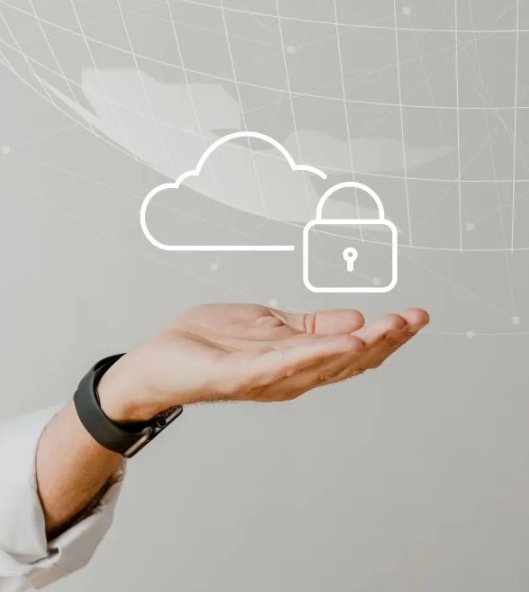Essential Cybersecurity Reporting Tools to Streamline Risk Management
- 192 Views
- admin
- 05/23/2025
- Cybersecurity
As the digital landscape continues to expand, so too does the complexity of managing cybersecurity threats. With cybercrime becoming a highly lucrative business, the need for effective risk management and timely reporting has never been greater. While many organizations still rely on outdated methods like spreadsheets to track cybersecurity activities, modern challenges demand smarter solutions.
The Problem with Spreadsheets in Cybersecurity
Spreadsheets may have long served as a go-to for organizing and tracking data, but they fall short in critical areas when applied to cybersecurity. They’re prone to human error, time-consuming to update, and ill-equipped for managing real-time risks. In addition, spreadsheets often exist in silos, making collaboration and transparency across teams difficult.
Relying on static documents to handle dynamic cybersecurity threats places organizations at a disadvantage. The manual nature of spreadsheets can delay detection of vulnerabilities, limit visibility across departments, and ultimately increase exposure to cyber risks.
Top Cybersecurity Reporting Tools to Consider
To combat the limitations of outdated reporting practices, companies are turning to purpose-built cybersecurity tools that enhance visibility, support automation, and provide real-time insights. Below are five essential tools that can significantly improve your cybersecurity reporting process.
1. Automation
Automation plays a key role in modern cyber risk management. By integrating systems and automating data collection, organizations can eliminate repetitive manual tasks and shift their focus to more strategic concerns.
Automation enables real-time monitoring of compliance efforts, allows for quicker identification of vulnerabilities, and ensures consistent tracking of risk metrics. Additionally, automation supports the development of incident response plans and provides immediate updates when controls fail or need remediation.
Advanced solutions even leverage technologies like AI to monitor controls and deliver actionable insights without human intervention. This not only improves accuracy but also frees up valuable time and resources.
2. Assessment Workflow and Reporting
Assessment tools help prioritize cybersecurity risks based on severity, allowing teams to address the most pressing concerns first. With integrated reporting capabilities, these tools allow organizations to track security performance and monitor compliance across industry frameworks or customized internal standards.
Having access to routine updates and predictive analytics enhances decision-making and supports stronger communication between cybersecurity teams and executive leadership. These tools also aid in regulatory audits and improve transparency across the organization.
3. Automated Crosswalking
With compliance requirements growing across industries, mapping security controls to multiple frameworks has become a challenge. Traditional crosswalking—manually matching controls between different standards—is time-consuming and often lacks precision.
Automated crosswalking simplifies this process by using advanced algorithms to align control sets across various frameworks. Some platforms even employ natural language processing to analyze intent rather than relying solely on text matches, resulting in more accurate and scalable mappings.
Organizations benefit from quick, consistent control alignment that supports efficient audit preparation and strengthens overall compliance strategies.
4. Risk Register
A cybersecurity risk register is an essential tool for recording, monitoring, and managing risks in one centralized location. It provides visibility into current and potential threats, assigns severity levels, and outlines action plans for mitigation.
With a centralized register, risk data can be analyzed over time to detect trends, assess return on security investment (ROSI), and inform leadership decisions. Real-time updates allow for quick escalation of emerging risks and better prioritization across departments.
By organizing cybersecurity data into a structured format, a risk register ensures your security team can effectively communicate threats and progress to non-technical stakeholders.
5. Real-Time Reports and Dashboards
With increased attention from Boards and executives, the ability to communicate cybersecurity posture clearly and concisely is critical. Real-time dashboards and reporting tools translate complex risk data into understandable visuals that highlight key performance indicators and current threats.
These tools enable security professionals to deliver timely updates, demonstrate compliance efforts, and show the impact of ongoing risk management initiatives. Visual insights are especially useful during board meetings and executive briefings, where clarity and speed of understanding are essential.
In Conclusion
Outdated reporting methods no longer meet the demands of today’s cybersecurity challenges. By incorporating tools designed for real-time analysis, automation, and scalable risk assessment, organizations can respond to threats more effectively, align with evolving compliance standards, and drive informed decisions at every level.
Recent Posts
- How AI is Revolutionizing Architectural Design: A Look at Tools, Trends, and the Future
- Streamlining Cyber Risk Assessments Through Automation
- Understanding the Difference Between Blockchain and Distributed Ledger Technology
- Is Bitcoin Mining Still a Viable Venture in 2025?
- Exploring AI: Unveiling Possibilities, Challenges, and Future Implications

